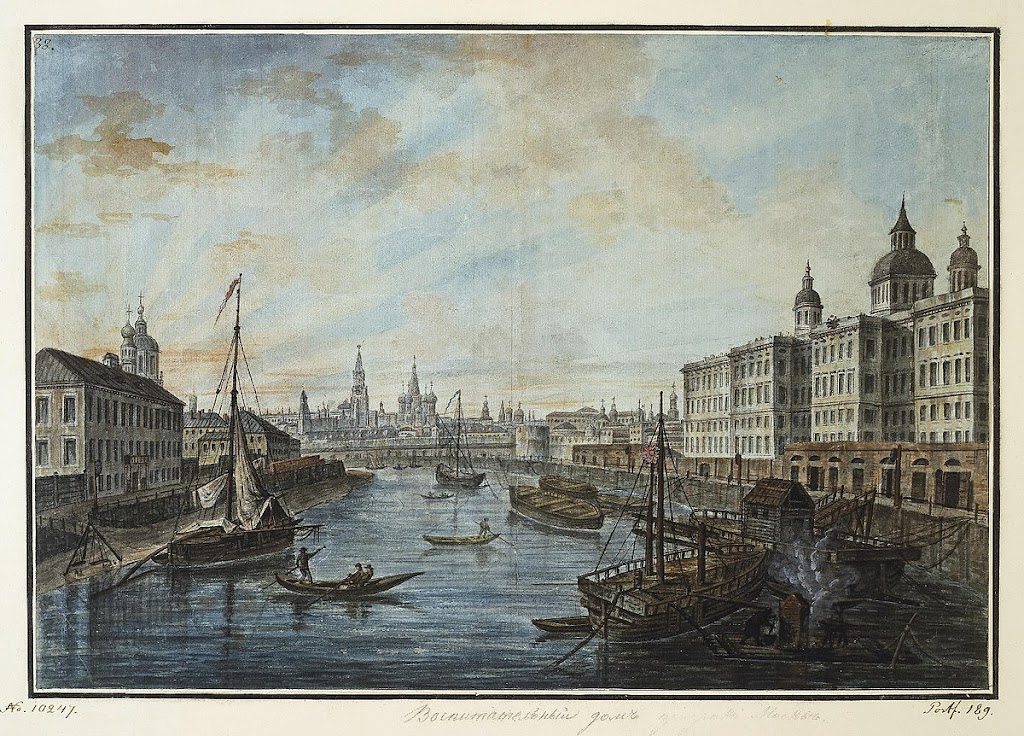 |
| The Moscow Foundling Home in the early 19th Century. Fyodor Alekseyev (c.1755 -1824) |
Many good stories include among their characters a foundling or an orphan. Including a foundling in the mix gives the storyteller the chance to raise plenty of interesting questions about the past.
In my book, The Legacy, for which I am currently doing research, one of the characters is a foundling. I have therefore been looking hard at the history of the Moscow Foundling Home, which was established in the second half of the eighteenth century by Catherine the Great. At the time, all over Europe, infanticide and abandonment of children was a huge problem. The Empress was just one of many monarchs who established orphanages to try to resolve it.
The aims of the Moscow Home, like many others, were only partially successful. The level of child mortality was horrendous, although apparently comparable with similar institutions elsewhere. In some years of the Home’s long history, particularly in the early years, more children died than were taken in. The death rate was exceptional among newly born babies, who represented the majority of the intake. Older children had a better chance of survival, and for them the support of the Foundlings Home was often a life-line. If they were serfs they were automatically freed, they received a good education, and once in their teens they were trained for a trade. Some of the girls were sent to the Imperial Theatre School, and some of the more talented boys managed to enter university.
This system changed in the 1830’s when Nicholas 1stdecided that this opportunity for advancement encouraged mothers to abandon their children. Thereafter the prospects for the foundlings became much less rosy, although the number of children taken in continued to climb.
Remarkably, during the French occupation of Moscow in 1812 the Home was preserved despite the fact that most of the buildings surrounding the vast compound were razed to the ground. The presence of fire-fighting equipment, which was absent in other parts of the city, enabled the staff to fight and avert the flames. Napoleon himself, at the request of the Director at the time, General Ivan Tutolmin, protected the children, sending twelve gendarmes to guard the orphanage gates from looters.
Buildings that were part of the Foundling Home can still be seen today. Some can only be glimpsed from the embankment of the Moscow River, but the administrative building built by the dowager empress Maria Fedorovna in 1826 can still be seen in all its classical glory.
Will my Moscow foundling live happily ever after? Will she like Tom Jones, or indeed Ralph Rackstraw, find that the muddles and mysteries of their childhood masked noble birth and illustrious parentage? Readers will have to wait and see.
